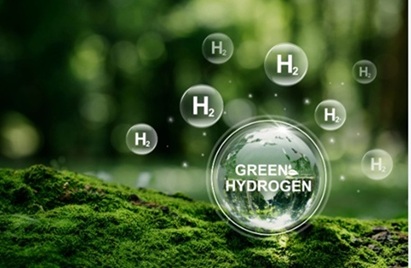


The green hydrogen market drives decarbonization in industries, power, and transport, highlighting growth drivers, tech advances.
The global energy sector is undergoing a rapid transformation, with renewable and sustainable energy sources gaining immense traction. Among these, green hydrogen has emerged as a key player in the transition to a low-carbon economy. Produced through the electrolysis of water using renewable electricity, green hydrogen offers a clean and sustainable alternative to traditional fossil fuels. Unlike grey hydrogen, which relies on natural gas and emits carbon dioxide, green hydrogen produces zero emissions, making it an environmentally friendly solution for various industries.
The green hydrogen market is witnessing substantial growth due to several key factors. One of the primary drivers is the rising demand for clean energy across multiple sectors, including power generation, transportation, and industrial applications. As global energy consumption continues to rise, particularly in developing economies, green hydrogen provides a sustainable means to meet this demand while reducing greenhouse gas emissions. Additionally, the growing focus on decarbonization and climate action policies worldwide has encouraged governments to invest in renewable energy infrastructure and support the adoption of hydrogen technologies.
Industrial applications represent a significant segment of the green hydrogen market. The food and beverage, chemical, petrochemical, and medical industries are increasingly adopting green hydrogen to replace traditional energy sources. For example, the chemical and petrochemical sectors rely heavily on hydrogen for processes such as ammonia synthesis and refining, which are traditionally energy-intensive and carbon-heavy. By switching to green hydrogen, these industries can reduce their carbon footprint while maintaining operational efficiency. The food and beverage sector, driven by its high energy demands for processing, packaging, and refrigeration, is also expected to grow rapidly, with a projected CAGR of 51.6% from 2023 to 2032. Green hydrogen provides a clean energy solution where direct electrification is not practical or efficient.
Technological advancements are further boosting the market growth. The development of high-efficiency electrolyzers, improved storage solutions, and scalable production facilities is making green hydrogen more economically viable. Countries like Germany, Japan, China, and the United States are leading the way with significant investments in green hydrogen projects and pilot plants. These initiatives aim to reduce production costs, expand infrastructure, and integrate hydrogen into existing energy systems. Additionally, the growing collaboration between governments, private players, and research institutions is accelerating innovation, commercialization, and the global adoption of green hydrogen.
Moreover, the transportation sector presents a lucrative opportunity for green hydrogen applications. Hydrogen fuel cells can power heavy-duty trucks, buses, and ships, offering a sustainable alternative to conventional diesel and petrol engines. With rising concerns about air pollution and stringent emission regulations, hydrogen-powered vehicles are expected to play a critical role in achieving global decarbonization targets. Similarly, the expansion of power generation systems using hydrogen as a fuel or storage medium offers a reliable solution to balance intermittent renewable energy sources like solar and wind.
Despite its potential, the green hydrogen market faces challenges, including high production costs, infrastructure requirements, and regulatory barriers in some regions. However, as economies scale up production, invest in technology, and introduce supportive policies, these challenges are gradually being addressed, paving the way for rapid growth in the coming years.
In conclusion, the green hydrogen market represents a transformative opportunity for a sustainable energy future. Driven by increasing energy demands, decarbonization initiatives, technological advancements, and government support, green hydrogen is poised to play a central role in shaping a cleaner, more resilient, and sustainable global energy landscape. As adoption expands across industrial, transportation, and power sectors, green hydrogen is set to emerge as a cornerstone of the renewable energy revolution.
